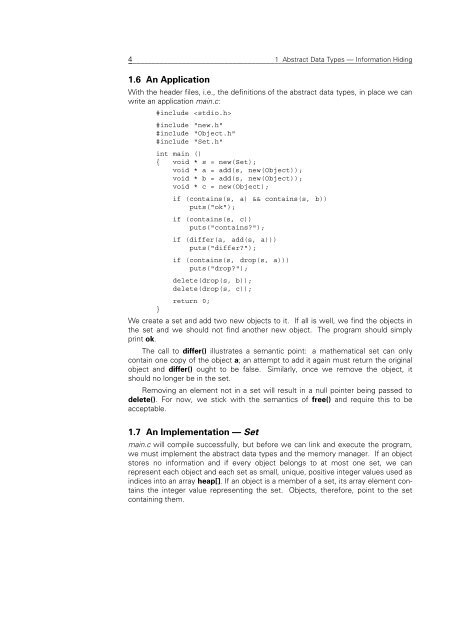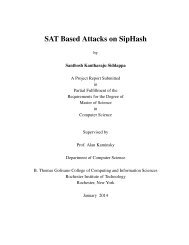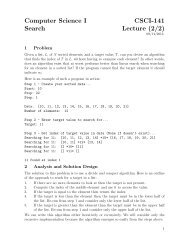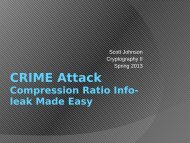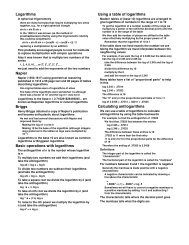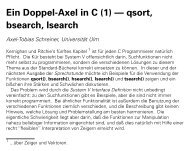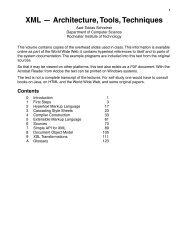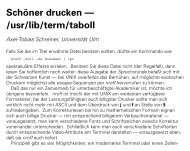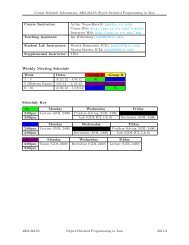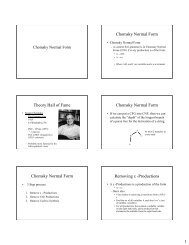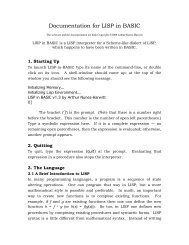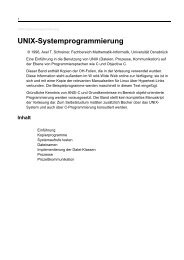Object-Oriented Programming With ANSI-C (pdf)
Object-Oriented Programming With ANSI-C (pdf)
Object-Oriented Programming With ANSI-C (pdf)
You also want an ePaper? Increase the reach of your titles
YUMPU automatically turns print PDFs into web optimized ePapers that Google loves.
4__________________________________________________________________________<br />
1 Abstract Data Types — Information Hiding<br />
1.6 An Application<br />
<strong>With</strong> the header files, i.e., the definitions of the abstract data types, in place we can<br />
write an application main.c:<br />
#include <br />
#include "new.h"<br />
#include "<strong>Object</strong>.h"<br />
#include "Set.h"<br />
int main ()<br />
{ void * s = new(Set);<br />
void * a = add(s, new(<strong>Object</strong>));<br />
void * b = add(s, new(<strong>Object</strong>));<br />
void * c = new(<strong>Object</strong>);<br />
if (contains(s, a) && contains(s, b))<br />
puts("ok");<br />
if (contains(s, c))<br />
puts("contains?");<br />
if (differ(a, add(s, a)))<br />
puts("differ?");<br />
if (contains(s, drop(s, a)))<br />
puts("drop?");<br />
delete(drop(s, b));<br />
delete(drop(s, c));<br />
return 0;<br />
}<br />
We create a set and add two new objects to it. If all is well, we find the objects in<br />
the set and we should not find another new object. The program should simply<br />
print ok.<br />
The call to differ() illustrates a semantic point: a mathematical set can only<br />
contain one copy of the object a; an attempt to add it again must return the original<br />
object and differ() ought to be false. Similarly, once we remove the object, it<br />
should no longer be in the set.<br />
Removing an element not in a set will result in a null pointer being passed to<br />
delete(). For now, we stick with the semantics of free() and require this to be<br />
acceptable.<br />
1.7 An Implementation — Set<br />
main.c will compile successfully, but before we can link and execute the program,<br />
we must implement the abstract data types and the memory manager. If an object<br />
stores no information and if every object belongs to at most one set, we can<br />
represent each object and each set as small, unique, positive integer values used as<br />
indices into an array heap[]. If an object is a member of a set, its array element contains<br />
the integer value representing the set. <strong>Object</strong>s, therefore, point to the set<br />
containing them.


